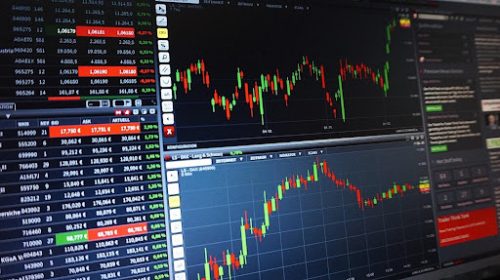
The monetary tightening will be detrimental to the stock market. Should you buy stocks in 2022? The Federal Reserve has already put pen to paper on the thought of the times they will clench, however it has not put it in ink. There are many other factors affecting stock prices that both investors and business leaders ought to keep in mind, spanning from Covid-19 and internal expenditures to the international political and financial turmoil. However, a major negative effect will be a new monetary policy.
While interest rates have a significant effect on everything from stock market prices to property values, the cause and effect relationship gets tricky. On their own, higher interest rates are bad for stock prices because of a couple of factors.
Primarily, the higher interest rate implies a reduction in the current price of earnings in the near future. In case the last phrase is clear, you can ignore this paragraph. The amount you collect a year from now is valued at a lower amount compared to the equivalent amount you are holding now. If you had the money today, you might be able to reinvest it for a profit, or you might be able to pay off the obligations that are running you up in interest.
Besides reducing current rates, much higher interest rates in addition to lowering current values will reduce economic growth and may even spark a recession. They will first reduce interest-sensitive spending, for example, new housing developments, vehicle buying and commercial capital spending. Then, people in these sectors will have less income and spend less on consumption. Thus, if we consider the current value of a company’s prospective earnings, these will be decreased as interest rates increase, discounting the present value still further reducing them.
The opinions of some analysts and funds differ. For example, financial experts from authoritative website Buy Stocks said: “However, there are times the stock market goes up when an interest rate rises. Generally speaking, interest rates go up in a strong economy. Both businesses and consumers tend to lend more and savings go down as the economy is growing fast, driving up interest rates. Therefore, we simply cannot argue that higher interest rates turn out to be negative for the economy, as they are generally the outcome of a robust economy. Likewise, when the economy is weak, lower interest rates happen as a result of lower lending and higher savings”. Different opinions of the company speak of uncertainty in the stock market in 2022.
During the year 2022, interest rates are more than probable to go up due to the Federal Reserve’s policies, rather than since the economy is intensifying. As a result, higher interest rates will have a detrimental effect on businesses. Companies that produce interest-sensitive items will see reduced sales and therefore reduced profits. The deterioration in income will trickle down to other branches. On its own, the Fed’s policy of tightening may drive down stock prices.
Nevertheless, prices in the stock market are much more significant than interest rates. The approach of investors works strategically in the near term, though they are difficult to anticipate. Holding on to the basics, the stride of the Covid-19 pandemic will affect stock prices, since it will be a primary element of the entire economy.
If the economy keeps developing, the negative influence of Fed contraction on stock prices may not drive stocks down. The sharp and fast rallies of the last few years may only inevitably cool to modest gains. As of now, debt yields are laughably low, so few would switch from equities to fixed income for the current yields. However, there is much less downside risk to bonds, which is a reason to hold some, even when rates must be watched with a microscope.
In what way can the market go down? Take a quick glance at the historical data following the Great Depression, and when things got truly awful, stocks dropped by around 40%, more or less. (1939-41, 1973-75, 1999-2002, 2008) No guarantees that this is the minimum for stock market damage, but take into account what it means in the immediate future. A 40% fall in the S&P 500 would bring it right back to May 2019 values – and investors would retain the discounts earned in the meantime. This is a powerful arguable case for stocks, though their immediate future is not exactly magnificent.
Interesting Related Article: “ Everything To Know About Stock Market Crashes Navigating the Stock Market – Finding Your Feet“

